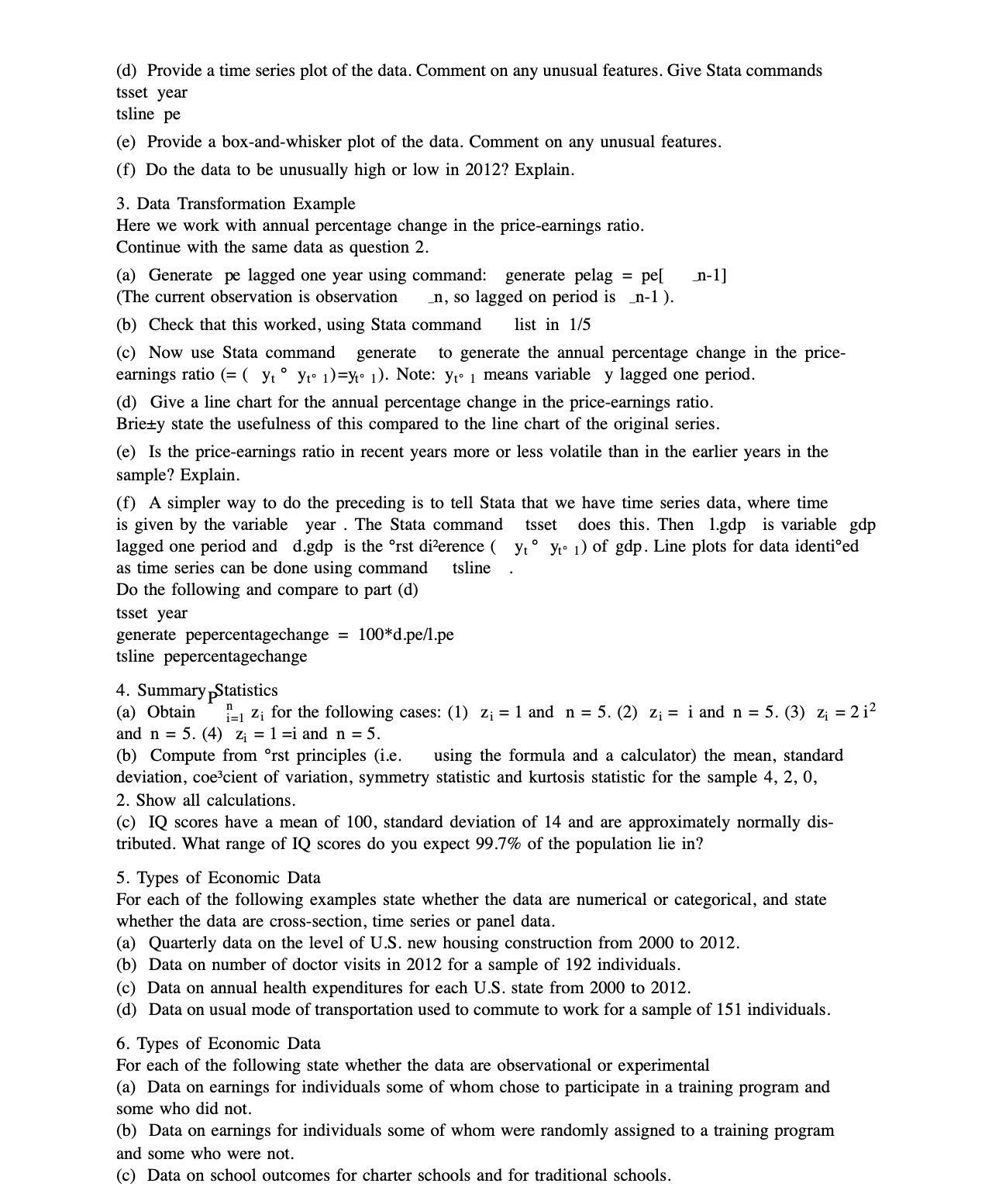(d) Provide a time series plot of the data. Comment on any unusual features. Give Stata commands tsset year tsline pe (e) Provide a box-and-whisker plot of the data. Comment on any unusual features. (f) Do the data to be unusually high or low in 2012? Explain. 3. Data Transformation Example Here we work with annual percentage change in the price-earnings ratio. Continue with the same data as question 2. (a) Generate pe lagged one year using command: generate pelag = pe[ _n-1] (The current observation is observation n, so lagged on period is _n-1 ). (b) Check that this worked, using Stata command list in 1/5 (c) Now use Stata command generate to generate the annual percentage change in the price- earnings ratio (= ( ytyto 1)=yto 1). Note: yto 1 means variable y lagged one period. (d) Give a line chart for the annual percentage change in the price-earnings ratio. Briety state the usefulness of this compared to the line chart of the original series. (e) Is the price-earnings ratio in recent years more or less volatile than in the earlier years in the sample? Explain. (f) A simpler way to do the preceding is to tell Stata that we have time series data, where time is given by the variable year . The Stata command tsset does this. Then 1.gap is variable gap lagged one period and d.gap is the rst dizerence ( yt yr. 1) of gap. Line plots for data identied as time series can be done using command tsline Do the following and compare to part (d) tsset year generate pepercentagechange = 100*d.pe/l.pe tsline pepercentagechange 4. Summary Statistics (a) Obtain 1=1 Zi for the following cases: (1) z; = 1 and n = 5. (2) z; = i and n = 5. (3) zi = 212 and n = 5. (4) zi = 1 =i and n = 5. (b) Compute from 'rst principles (i.e. using the formula and a calculator) the mean, standard deviation, coescient of variation, symmetry statistic and kurtosis statistic for the sample 4, 2, 0, 2. Show all calculations. (c) IQ scores have a mean of 100, standard deviation of 14 and are approximately normally dis- tributed. What range of IQ scores do you expect 99.7% of the population lie in? 5. Types of Economic Data For each of the following examples state whether the data are numerical or categorical, and state whether the data are cross-section, time series or panel data. (a) Quarterly data on the level of U.S. new housing construction from 2000 to 2012. (b) Data on number of doctor visits in 2012 for a sample of 192 individuals. (c) Data on annual health expenditures for each U.S. state from 2000 to 2012. (d) Data on usual mode of transportation used to commute to work for a sample of 151 individuals. 6. Types of Economic Data For each of the following state whether the data are observational or experimental (a) Data on earnings for individuals some of whom chose to participate in a training program and some who did not. (b) Data on earnings for individuals some of whom were randomly assigned to a training program and some who were not. (c) Data on school outcomes for charter schools and for traditional schools







